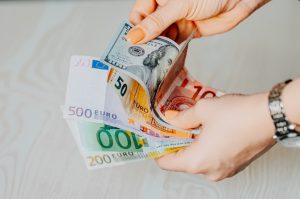Forex trading is a high-risk, high-reward investment activity that requires careful planning and analysis. One of the most important factors to consider when trading forex is the time of day. The forex market operates 24 hours a day, five days a week, which means that traders have multiple opportunities to enter and exit trades. However, not all trading hours are created equal, and some are more profitable than others. In this article, we will explore the best time of day to trade forex and the key factors that influence market volatility and liquidity.
Overview of the Forex Market
The forex market, also known as the foreign exchange market, is the largest financial market in the world, with a daily turnover of over $6 trillion. It is a decentralized market where traders buy and sell currencies from all over the world. The forex market is open 24 hours a day, five days a week, from Sunday at 5 pm EST to Friday at 5 pm EST. The market is divided into three major trading sessions: the Asian session, the European session, and the North American session. Each session has its unique characteristics, which affect the behavior of the market.
Factors that Influence Forex Market Volatility
The forex market is highly volatile, with prices fluctuating rapidly in response to various economic and political events. The volatility of the market is influenced by many factors, including:
1. Economic Data Releases: Economic data releases, such as GDP, inflation, and employment figures, have a significant impact on the forex market. These releases often cause sharp movements in currency prices, especially if they deviate from market expectations.
2. Central Bank Policies: Central banks play a crucial role in the forex market, as they control the money supply and set interest rates. Traders closely monitor the monetary policies of central banks, such as the Federal Reserve and the European Central Bank, as they can affect the value of currencies.
3. Political Developments: Political events, such as elections, referendums, and geopolitical tensions, can have a significant impact on the forex market. These events can cause sudden shifts in investor sentiment, leading to significant price movements.
Best Time of Day to Trade Forex
The best time of day to trade forex depends on the trader’s strategy and the currency pairs they are trading. Here are the three major trading sessions and their characteristics:
1. Asian Session: The Asian session starts at 7 pm EST and ends at 4 am EST. This session is known for low volatility and low liquidity, as most major financial centers, such as London and New York, are closed during this time. However, the Asian session can be profitable for traders who specialize in trading the Japanese yen, as it is the third most traded currency in the world.
2. European Session: The European session starts at 3 am EST and ends at 12 pm EST. This session is known for high volatility and liquidity, as major financial centers, such as London and Frankfurt, are open during this time. The European session is the most active session of the day and is best suited for traders who prefer to trade major currency pairs, such as the euro/dollar (EUR/USD) and the pound/dollar (GBP/USD).
3. North American Session: The North American session starts at 8 am EST and ends at 5 pm EST. This session is known for high volatility and liquidity, as major financial centers, such as New York and Toronto, are open during this time. The North American session is best suited for traders who prefer to trade the U.S. dollar, as it is involved in more than 80% of all forex transactions.
Conclusion
In conclusion, the best time of day to trade forex depends on the trader’s strategy, the currency pairs they are trading, and the market conditions. Traders should consider the characteristics of each trading session and the factors that influence market volatility and liquidity. It is advisable to avoid trading during low liquidity periods, such as the Asian session, and to focus on high volatility periods, such as the European and North American sessions. Ultimately, traders should develop a trading plan that suits their risk tolerance and trading style and stick to it consistently.





